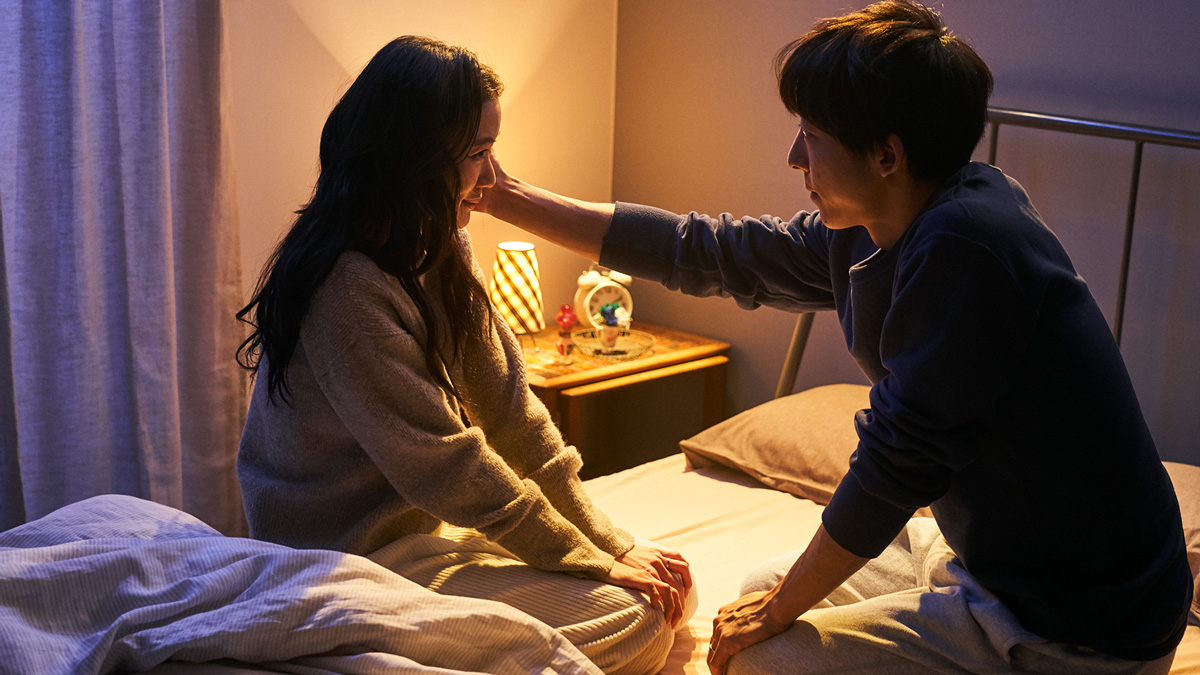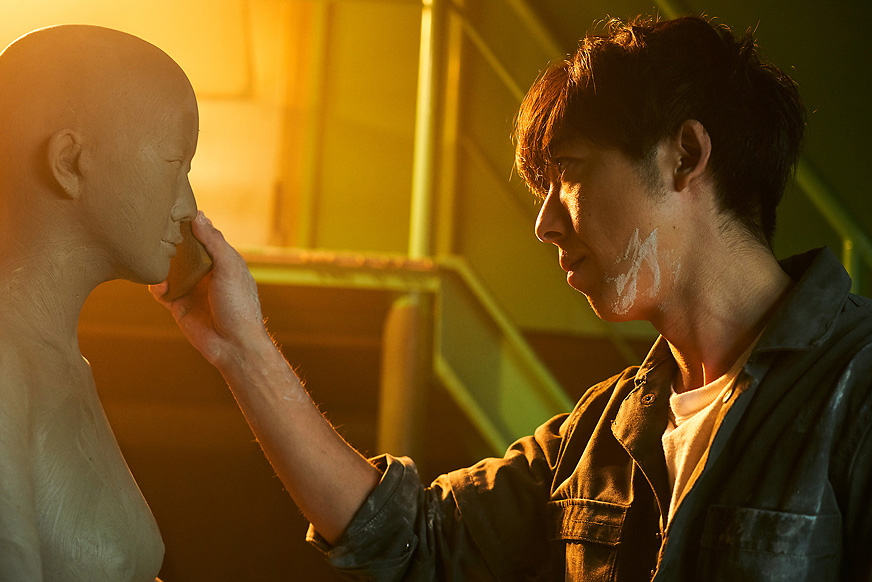
(c)2019 “Romance Doll” Production Committee Distribution: KADOKAWA
"Romance Doll" Take off falsehood and create a form of love together - the warmth of "acceptance" called sex
2020.01.24
The tactile sensation of the screen brought about by 16mm film images
Although ``Romance Doll'' saw the light of day after many twists and turns, the content of the work was also profound and well worth the time spent. While firmly adhering to the universal theme of ``couples'' (passing each other, conflict, and mutual understanding), the theme of ``sex,'' symbolized by love dolls, is depicted not only as an act of love, but also with a sense of loneliness.
The trembling ``loneliness'' that fills the screen is a characteristic unique to director Tanada, and combined with the many interior shots, you will feel a sense of confinement, as if the air is trapped. However, this is a very important point, and the image of Tetsuo and Sonoko's feelings that they couldn't say and wanted to convey as they passed each other, accumulating and increasing like sludge, is imprinted in my mind. To go.
What works here is that director Tanada was particular about shooting the entire film on 16mm film. The screen has a unique roughness and a texture that seems to contain warmth, always giving a somewhat old and nostalgic impression. In addition, the ``tactile sensation'' of this screen is linked to Tetsuo's personality, which pursues ``the perfect texture of a real woman.'' In other words, the screen itself expresses Tetsuo as a person.

"Romance Doll" (c) 2019 "Romance Doll" Production Committee Distribution: KADOKAWA
Sonoko's breathing wavers unreliably, like air bubbles moving from the water to the surface. water and air. They seem like they're together, but they're different. In the beginning, Sonoko appears on the screen as a mysterious, ``foreign object'', and her ephemeral presence is completely cut off by the sudden incident of ``telling a lie and disappearing from the house.'' Put it away. In this work, desks are often depicted, and the way the desks are reflected is dark and subdued, making the tones of the screen appear to have dropped. When Sonoko, who was both a foreign object and a ``feature'' on the screen, leaves, the world becomes monochromatic.
Later, when Sonoko returns for the first time in a few days and reveals the feelings she had hidden in her heart, and Tetsuo reconsiders his way of life, the balance between the two changes dramatically. Tetsuo and Sonoko, who share their pain and expose their weaknesses, begin to be exposed to the same light. Sometimes it's sunlight, sometimes it's indoor lighting. When they step into the same light and are dyed the same color, Tetsuo and Sonoko begin to walk as a couple for the first time.

"Romance Doll" (c) 2019 "Romance Doll" Production Committee Distribution: KADOKAWA
The ``visual language ability'' that expresses the changes in the couple's relationship through the colors, brilliance, and tones of the images is also impressive, and the item ``bento'' is really effective. When he was a newlywed, his beloved wife's bento appeared almost every day, but when his relationship with Sonoko deteriorated or was severed, it changed to bento from a convenience store or supermarket. At that time, Tetsuo's eating scenes, both at home and at work, are dark and heavy. When that happens, it's strange, and the bento itself starts to look cold and bland. Director Tanada uses parts other than these lines to create a subtext of emotion.
It's not like there's a lot of information, or that there's a strong emphasis on images or props. The acting by the actors is so realistic that it could be mistaken for a private film. However, precisely because of this, I can't help but think that ``Romance Doll'' has a ``resonance'' that goes beyond empathy, an ``assimilation'' that goes beyond conformity.
It is also interesting to occasionally insert ``trivial everyday scenes'' that are different from the mainstream of the story. The pain of Tetsuo's suffering and Sonoko's pain, which is not just "understood" but "understood" is indescribably expressed by Takahashi and Aoi, who have co-starred together since " All About Lily Chou-Chou " (2001). It goes without saying that this is a wonderful thing, but it also owes a lot to Director Tanada's keen observational eye.
Everything in this film, including the visuals, acting, and dialogue, is an extension of everyday life. Therefore, the meaning of "sex" that I will be talking about is completely different from other works.

